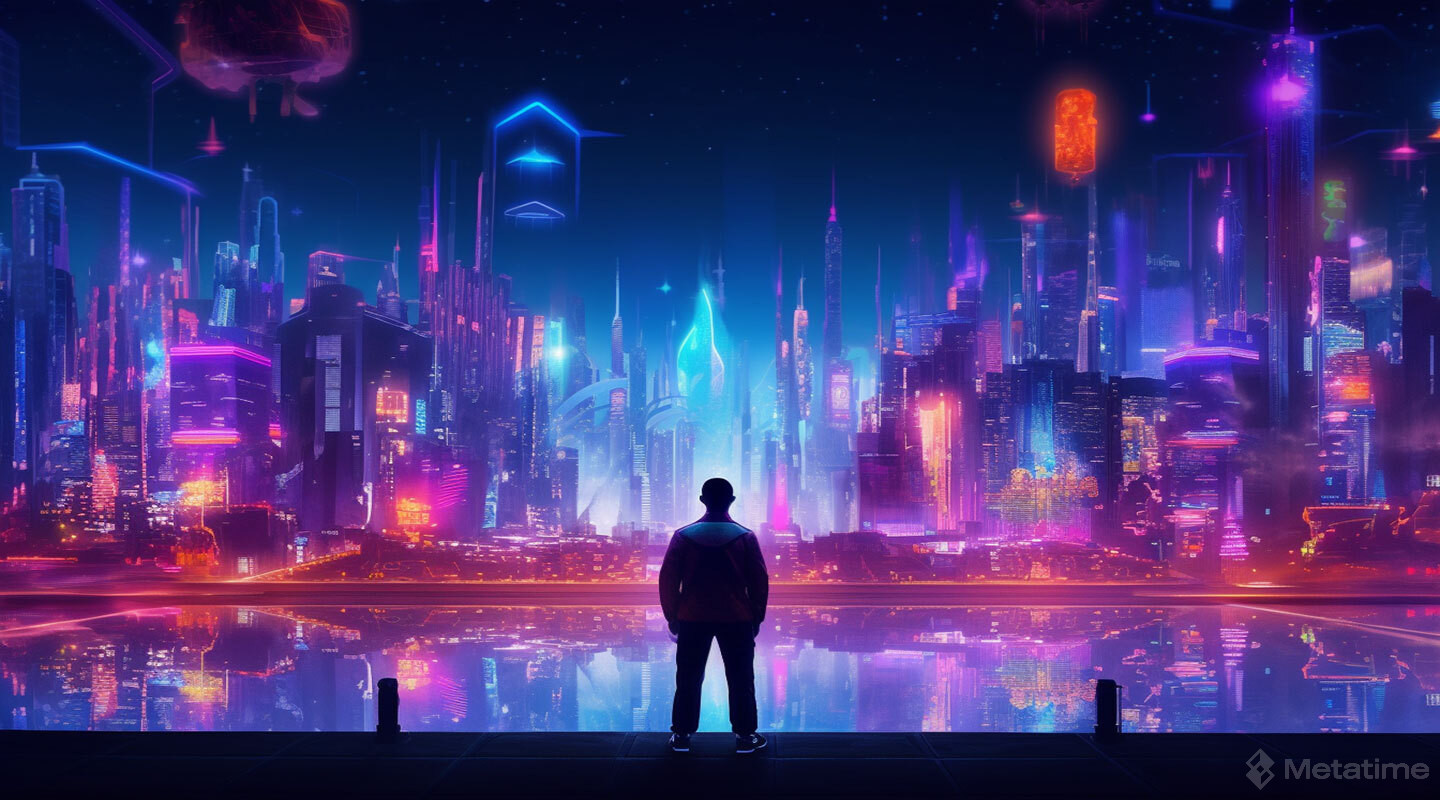The Metaverse is known as a decentralized parallel space that offers greater ownership to individuals. Although the concept of the Metaverse was first used in Neal Stephenson's 1992 science fiction novel Snow Crash, the roots of the Metaverse go back to the 20th century, a book that influenced the likes of Jeff Bezos, Sergey Brin, and Mark Zuckerberg. The concept laid the foundation for a World Wide Web that today hosts parallel worlds where millions of people socialize, with devices and ideas built on a hazy vision of virtual reality and the Internet of the future. The metaverse is traditionally rich with game developers and internet companies connecting virtual worlds such as Fortnite, THERE, and Facebook Horizon, as well as creating and selling assets, doing business, and learning together. However, it has been the domain of private startups that lacks the interconnection between the virtual worlds within the metaverse and the different platforms on which users interact.
Snow Crash and Metaverse
The metaverse is a concept that emerged in the flood of scientific discoveries in the 20th century and is the ancestor of ideas such as the internet and automatic file storage. Neal Stephenson's use of the metaverse in his 1992 science fiction novel Snow Crash was an extraordinary innovation. In the years that followed, Snow Crash became a landmark for Silicon Valley's leading founders, and the book's prescient vision of a virtual universe unified with the physical world was recognized as a roadmap for the future.

In 1932, the concept of virtual reality was first mentioned by the French playwright Antonin Artaud in his essay "The Theater of Cruelty (First Manifesto)."
In 1945, in "As We Think", American engineer Vannevar Bush proposed the concept of a primitive computing device he called the Memex. Bush described Memex as a system that allowed users to manage all kinds of information, including books, correspondence, and other documents, by compressing and storing them on a single physical desktop. Memex represented the idea of giving users easy and fast access to documents in a mechanized filing cabinet. This concept inspired the development of Brown University's Hypertext Editing System (HES) project, which began in 1967. Tim Berners-Lee, the creator of the Internet, cited Memex and HES as influential in the creation of the World Wide Web.
In 1981, Vernor Vinge's short novel True Names provided a prescient depiction of cyberspace, playing a pioneering role in the subject a year before the concept was coined by its author William Gibson.
In 1992, Neal Stephenson was the first to use the metaverse concept in his science fiction novel Snow Crash. Also in 1992, CEO Jason Lanier, a virtual reality headset manufacturer, introduced virtual reality musical instruments (VRMI) at the "Sound of One Hand" performance in Chicago.
In 2000, IT research firm Gartner coined the term supranet to describe the convergence of virtual and physical worlds.
In 2011, Ernest Cline's novel Ready Player One was published. This novel is about a virtual reality game called OASIS, a parallel society in a dystopian future where humanity escapes from worldly chaos.
In 2018 and 2020, the film adaptation of Ready Player One, written by Ernest Cline and Zak Penn and directed by Steven Spielberg, was released on March 29, 2018.
In March 2021, the Google Trends index for the metaverse reached 100 for the first time. In the previous fifteen years, the concept of metaverse was used quite rarely, but between January 2005 and December 2020, its usage never exceeded 7. This clearly shows that the metaverse has recently gained increasing interest and popularity.
Games and Virtual Worlds with Metaverse
Virtual worlds where players can interact with each other in games that emerged at the beginning of the new millennium with the advent of the internet gained popularity as Metaversal games. Some of the pioneers of this genre are There, RuneScape, and Second Life. These games gained many users in a wave of gaming. Then Roblox, Minecraft, Fortnite, and Animal Crossing: New Horizons unexpectedly gained popularity. However, despite having a global fan base, these games remain centralized. Users cannot seamlessly move from one gaming platform to another. For instance, one cannot switch from Fortnite to Animal Crossing. Furthermore, content creators on these platforms have to follow the rules of the game developers.
In addition, the massive success of these games shows that the concept of the metaverse is beginning to take shape, even if only in fragments, in virtual hotspots in cyberspace. The metaverse allows users to create, buy, and sell items across different platforms and share experiences with thousands of people simultaneously.

In 1998, There, a virtual world-based game was created. Through this game, users can interact and socialize with each other as avatars. They can also pay for goods and services with rebukes, the game's currency.
In 2001, the game RuneSpace was released. The game is very popular and is described as a multiplayer, online role-playing game.
In 2003, Linden Lab launched the virtual world Second Life, aiming to realize its goal of creating a user-defined metaverse where people can interact, play, do business, and communicate.
In 2006, Roblox was launched. Through Roblox, players can create and play games online with other participants.
In 2012, the game RuneScape reaches 200 million registered users.
In 2013, virtual reality headset manufacturer Oculus unveiled its prototype to Kickstarter backers. Oculus' VR (Virtual Reality) headsets are an important technological advancement developed to bring the virtual reality experience to users.
In 2014, Zwift, an immersive cycling game, was released. Zwift is a platform where users ride bicycles in virtual worlds using indoor bicycles, offering a realistic and fun experience.
In 2017, Fortnite Battle Royale was released by Epic Games. Fortnite Battle Royale is a free, online, and multiplayer game.
In 2019, the development team of Dual Universe, a sandbox game, managed to bring together 30,000 users into a "single continuous piece" that could interact with each other live, simultaneously. This was recognized as an extraordinary achievement in a large-scale and dynamic virtual universe.
In 2020, Nintendo released Animal Crossing: New Horizons. This game allows players to interact with flora, fauna, and villagers in an idyllic virtual world. Players enjoy this cute and relaxing game while performing their daily life activities. That same year, the Fortnite game made a big splash by hosting a virtual concert by rapper Travis Scott. It was a mesmerizing experience that was virtually attended by more than 12 million viewers. It is one of the examples of the merger between the gaming world and the real world, showing that virtual events are a big hit with the masses.
In 2021, the Republic of Korea announced its plan to create a national VR and AR platform through an initiative called the "national metaverse alliance." This initiative emphasizes the importance of the metaverse concept, aiming to create a nationwide platform in the fields of virtual and augmented reality.
Big Tech and the Metaverse
The novel Snow Crash not only introduced the concept of the metaverse, but also had a profound impact on many prominent figures in Silicon Valley, such as Sergey Brin, co-founder of Google, and Jeff Bezos, founder of Amazon and Blue Origin. In addition, some technology leaders, such as Mark Zuckerberg, CEO of Facebook, were influenced by reading this novel and helped shape their companies' projects. Thanks to this interaction, tech giants have played an important role in the race to build metaverse platforms.
Since 2020, the COVID-19 pandemic has led to the proliferation of virtual work for many professionals around the world. This has led to an explosive growth in the number of users of applications such as Google Teams, Zoom, and other virtual collaboration platforms. However, existing metaverse applications and platforms are still centralized and limit users to proprietary software. However, Microsoft's yet-to-be-released Mesh project has the goal of creating a platform that will enable users to collaborate virtually across devices. This has led to the creation of an innovative tool and platform product that aims to give users more freedom.

In 2000, Jeff Bezos, founder of Amazon, incorporated Blue Origin into his company.
In 2001, Microsoft launched a live recording project based on Memex.
In 2014, Facebook acquired Oculus for $2.3 billion. After this move, Facebook increased and accelerated its investments in the metaverse.
In 2021, Microsoft introduced Mesh. Mesh is a platform designed to support virtual collaboration tasks synchronized across devices. That same year, Mark Zuckerberg stated in an interview with CNET that one of Facebook's goals for Horizon, which is currently in beta and available by invitation only, is for "as many people as possible to be able to experience virtual reality and jump into the metaverse." He also emphasized the idea of having various social experiences within Horizon. These statements demonstrate Facebook's focus on technologies such as virtual reality and the metaverse and its aim to encourage interaction between users.
Birth of the Decentralized Age
In the 2000s and early 2010s, the first experiments in decentralized metaverse storage emerged. During this period, projects called Colored Coins were created using blockchain technology. Colored Coins are designed as a system that allows individuals to create, buy, sell, and own unique digital assets. As such, Colored Coins have attracted attention for their similarity to NFTs. Other NFT-based games include Cryptopunks and CryptoKitties. Especially in 2018, the sale of a CryptoKitty for more than $170,000 triggered the rise of the NFT art craze.
In 2015, unlike the original game managed by Jagex, RuneSpace started offering private servers, called RSPS, managed by individuals or small online teams.
Colored coins, considered the conceptual precursor to NFTs, were first mentioned in 2012 by Yoni Assia in a blog post called "Bitcoin 2. X (aka Colored Bitcoin) - initial specs." These tokens represented a new approach that made it possible to create, buy, sell, and own NFTs on the blockchain.
In 2014, Counterparty, a decentralized financial platform built on a distributed internet protocol and the Bitcoin blockchain, was launched.
In 2017, John Watkinson and Matt Hall created 10,000 NFT characters on the Ethereum blockchain, which they called Cryptopunks. Each Cryptopunk had a unique character, which was quickly purchased by early adopters of the nascent NFT art phenomenon. In the same year, the NFT game CryptoKitties was released, allowing users to own, breed and collect unique kittens printed on the blockchain.
In 2020, Decentraland opened to the public.
In 2021, Sotheby's organized an NFT art exhibition in a virtual replica of iconic London galleries in the Decentraland metaverse. Also in 2021, rock band Kings of Leon became the first band to release their album When You See Yourself as NFT.







